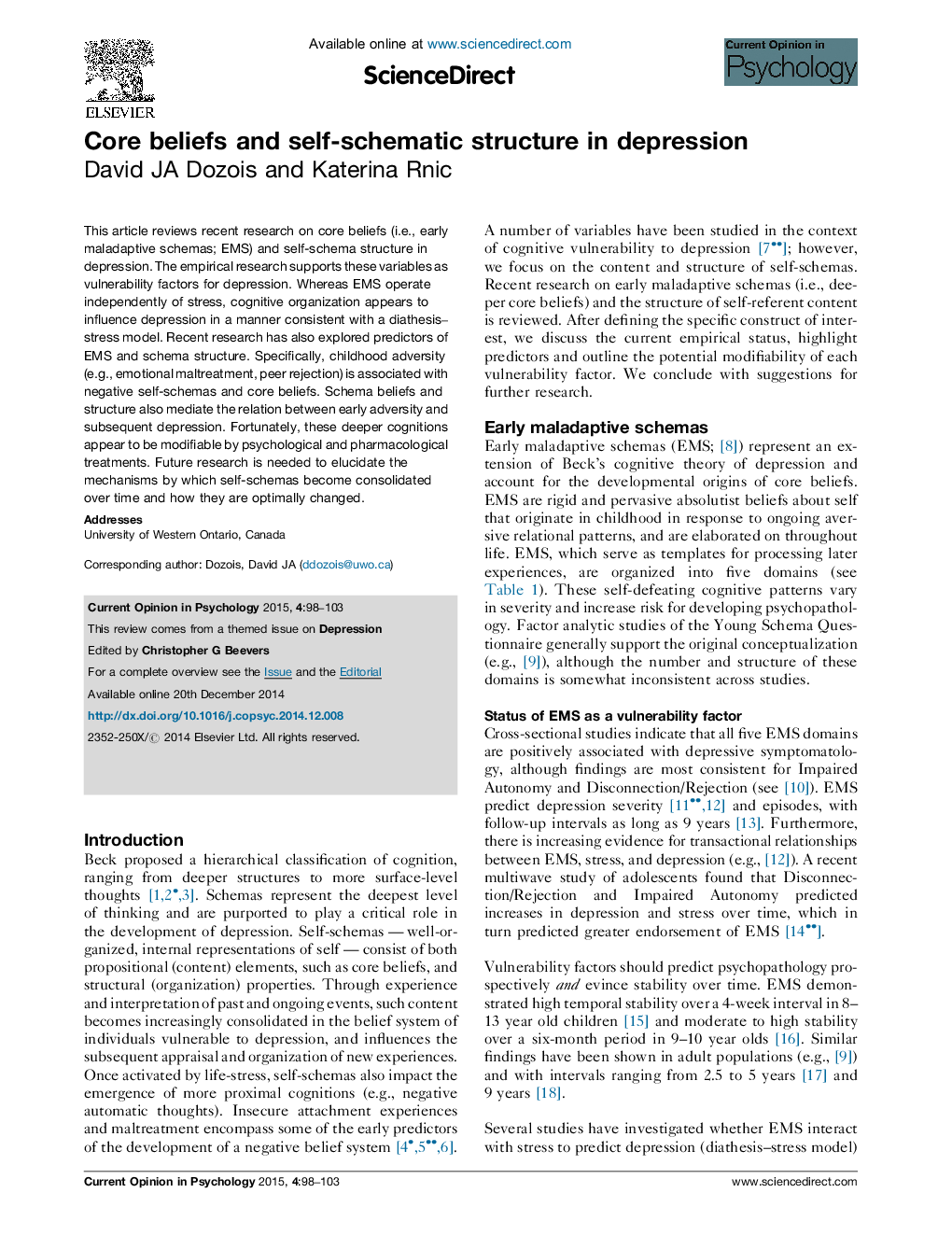| Article ID | Journal | Published Year | Pages | File Type |
|---|---|---|---|---|
| 879493 | Current Opinion in Psychology | 2015 | 6 Pages |
•EMS and cognitive structure are important vulnerability factors for depression.•EMS predict depression independently of stress.•Cognitive organization operates in a manner consistent with diathesis–stress models.•Childhood maltreatment may contribute to the development of core beliefs and schemas.•Core beliefs and schemas can be modified by a variety of treatments.
This article reviews recent research on core beliefs (i.e., early maladaptive schemas; EMS) and self-schema structure in depression. The empirical research supports these variables as vulnerability factors for depression. Whereas EMS operate independently of stress, cognitive organization appears to influence depression in a manner consistent with a diathesis–stress model. Recent research has also explored predictors of EMS and schema structure. Specifically, childhood adversity (e.g., emotional maltreatment, peer rejection) is associated with negative self-schemas and core beliefs. Schema beliefs and structure also mediate the relation between early adversity and subsequent depression. Fortunately, these deeper cognitions appear to be modifiable by psychological and pharmacological treatments. Future research is needed to elucidate the mechanisms by which self-schemas become consolidated over time and how they are optimally changed.
